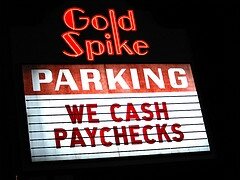D1-A payday: 'Full cost of attendance' a disgrace
Thank goodness Rob Burns cares about academics. The rising senior from Northern Virginia had a 4.01 GPA after his junior year at Stone Bridge High School and could have gone to almost any college. Considering nearly all football players at NCAA Division I-A schools get full scholarships, without UVA’s academic reputation, the superstar defensive end may have signed elsewhere. And if certain bigwigs have their way, Virginia might be unable to afford kids like Burns in the future.
As a rule, Ivy League football players are the only ones who don’t receive athletic scholarships. Everywhere else, football players, regardless of GPA, receive full tuition as well as room and board, special food, use of exclusive facilities, individual tutoring, stipends, and often have access to a “needy student fund” for clothes and other necessities.
Since they already have such a sweet deal, it’s no wonder the notion of paying college football players is unsavory at the very least. But the knowledge that schools make so much money from football while the players receive a paltry $50,000+ in education and perks seems unjust to a great many people. So what to do?
The Big Ten and the SEC think they have the answer: if giving them a paycheck is the problem, just hand football players money another way. Pay them, but don’t pay them. Expand athletic scholarships to cover “the full cost of attendance.”
As Ivan Maisel of ESPN so aptly put it, “Full cost of attendance is bureaucratic jargon.” With the right spin, anything could be included. A trip home for Thanksgiving? Done. A Tempur-Pedic mattress for that aching back? Sure. An X-Box to study up on Madden? You got it. Some iTunes gift cards to purchase blood-pumping music? Why not? Oh? You don’t have an iPod? Why, ask and ye shall receive.
Until now, the argument against “full cost of attendance” has been financial: schools can’t afford it, and NCAA scholarship limits don’t allow it. But as Reggie Bush, Cam Newton, and numerous others have proved, plenty of folks out there are itching to pad players’ pockets, and boosters would surely be happy to jump at a legitimate chance to provide players with their hearts’ desires.
Undoubtedly the money to provide “full cost of attendance” is there for the taking, so what– if anything– is the problem?
By not calling it an actual paycheck (tacky!), proponents of the plan believe the serfs on the academic side of campus won’t be offended (a gross display of naïveté, to be sure) and the players would have nothing to fear from the taxman. “Full cost of attendance” would be a gift-in-kind sort of program, only with money.
One has to wonder if commissioners Jim Delany (Big Ten) and Mike Slive (SEC) remember Enron and Lehman Brothers. Though they promote “full cost of attendance” as a scholarship program, it’s just transparent creative accounting wrapped in ham-handed (and equally transparent) linguistic doublespeak.
“Full cost of attendance” is nothing more than a vulgar and flagrant manipulation of the laws that prohibit college athletes from being paid. (And its endorsement is grossly unbefitting a man– Slive– who got his JD from UVA!)
A rose is a rose is a rose– so Gertrude Stein said. It’s the law of identity, which both Delany and Slive, being lawyers, should know. A thing is itself; it is what it is.
“Full cost of attendance” is nothing but a paycheck, and a blank one at that. Call it what you will, it’s something neither Virginia nor any other college can afford.
~
Juanita lives on a farm in Charlotte County with her husband, son and many dogs.
